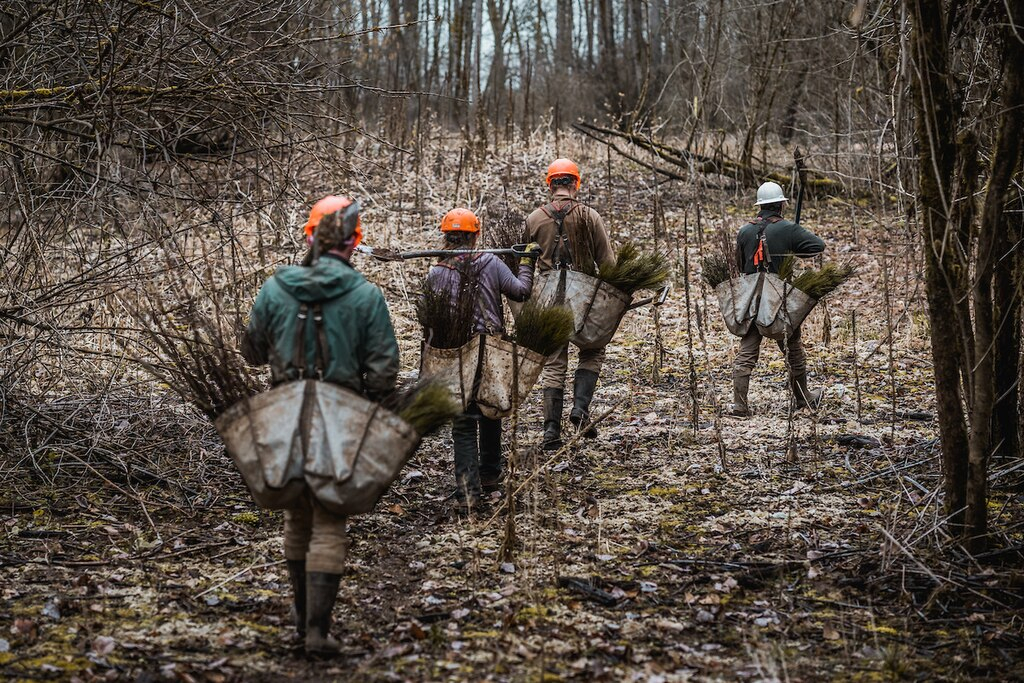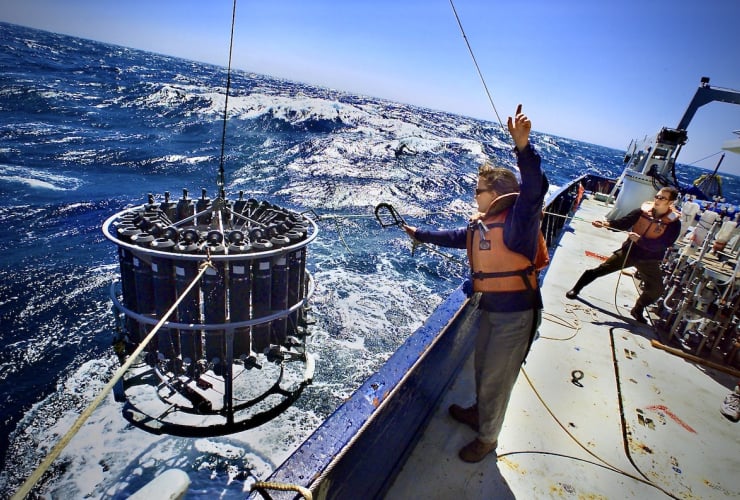One-fifth of tree-planting projects funded by the federal government's two billion trees program are Indigenous-led, and there will soon be more thanks to a new funding stream specifically for Indigenous project proposals.
The two billion trees program was launched in 2021 and quickly saw “a high level of interest” from Indigenous proponents, mainly First Nations, according to Natural Resources Canada briefing materials obtained by Canada's National Observer through a federal access-to-information-request.
“A little over 12 million trees were planted by Indigenous-led initiatives” with roughly $16 million in funding combined in 2021 and 2022, Natural Resources Canada confirmed in an emailed statement. Updated numbers for the most recent planting season will be available in 2024.
The Liberal government’s pledge to plant two billion trees by the end of 2030 was one of the party’s prominent campaign promises in 2021. The tree planting program is billed as a natural climate solution that helps restore biodiverse forest ecosystems, sequesters carbon and creates jobs. Trees effectively suck planet-warming carbon dioxide out of the air by converting it into wood and plant matter as they grow.
Some projects are focused on putting trees in the ground, while others also include initiatives like starting tree nurseries. The McLeod Lake Indian Band in B.C. was awarded $1 million to plant almost 900,000 trees to reforest an area destroyed by a spruce beetle infestation. Projects aiming to restore areas struck by wildfires were also funded.
A forestry company run by the Osoyoos Indian Band received $331,000 to plant 70,000 trees on reserve land scorched during the 2021 wildfires, as well as to collect cones and seeds and monitor the trees after they are planted. The Kaska Nation’s Daylu Dena Council received roughly the same amount to plant 10,000 trees in an area struck by wildfire in 2018. The funding will also go towards the Daylu Dena Council’s training on tree planting and forest management and long-term planning for possible greenhouses and future planting projects. The Lac Ste. Anne Métis Community Association will get nearly $854,000 over eight years to build a greenhouse for tree seedlings and related planting activities.
Trees help anchor soil in place and control erosion so the Kitsumkalum Indian Band is using nearly $1 million over four years to restore the Skeena floodplain ecosystems near Terrace, B.C.
These projects were all awarded through competitive open calls for proposals.
In August, the federal government launched a $500-million funding stream for Indigenous-led efforts to plant 180 million trees and increase forest cover. For 12 months, Natural Resources Canada consulted Indigenous governments and organizations to co-develop the funding stream, according to the briefing materials. They say the department met with groups including the Métis National Council, Manitoba Métis Federation, Metis Settlement General Council, Congress of Aboriginal Peoples, Assembly of First Nations, National Aboriginal Forestry Association and the British Columbia First Nations Forestry Council.
This new stream has received 10 proposals to date, and more details will be available later this year. In 2026, the program will be reviewed to ensure it is working for participants, according to the briefing notes. The current approach, known as “distinctions-based funding,” allocates funding to each of these Indigenous groups: First Nations, Inuit, Métis and unaffiliated applicants. This approach was widely requested by all parties because it recognizes the unique needs and barriers facing different Indigenous nations and communities.
For example, First Nations communities are more likely to have access to land to plant trees than Métis communities. The Metis Settlements of Alberta is the only Métis government with a recognized land base, according to the briefing notes. In other places, Métis groups would have to work with landowners to plant trees, it noted. Canada’s colonial policies eventually afforded First Nations rights over some land but the aforementioned Metis Settlements of Alberta is the only legislative claim Métis have to collectively hold land bases in Canada.
Natural Resources Canada said it is on track to plant two billion trees by 2031 and is exceeding its planting goals, with 28.9 million planted in 2021 — 95 per cent of its goal for the first year. The department later changed that number to 83 million by including trees planted under other programs like Environment and Climate Change Canada's Low Carbon Economy Fund. The 2021 planting numbers fell well short of the 60-million goal.
A 2023 audit by Canada’s Commissioner of the Environment and Sustainable Development found the two billion tree pledge is unlikely to be met “unless significant changes are made.”
The audit also noted that trees sequester carbon dioxide but the effects are not immediate so the emission reductions from planting more trees won’t occur for years and Natural Resources Canada was panned for “considering whether to allow recipients to participate in greenhouse gas offset systems, which could further decrease the greenhouse gas benefits of the program.”
In the 2021 planting season, Natural Resources Canada funded more than 270 monoculture sites covering 3,136 hectares, according to the audit. These monoculture plantings accounted for 14.4 per cent of the total trees planted under the program in 2021. The audit also found the two billion tree program doesn’t require trees to remain in the ground long term. This is largely because the department doesn’t have a way to enforce permanence of any activity on land it doesn’t own but also due to concerns seeking long-term control on tree-planting partners’ land could reduce willingness to participate.
Natasha Bulowski / Local Journalism Initiative / Canada’s National Observer






Comments